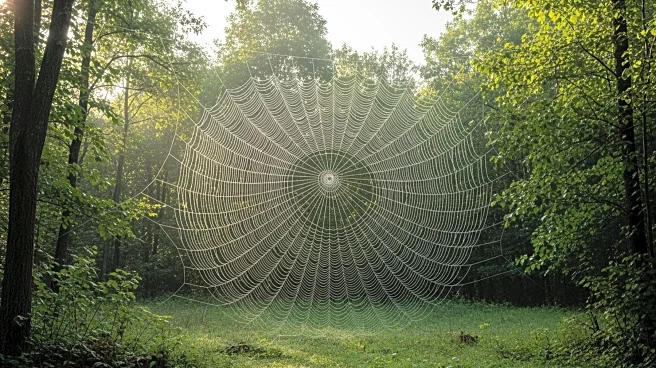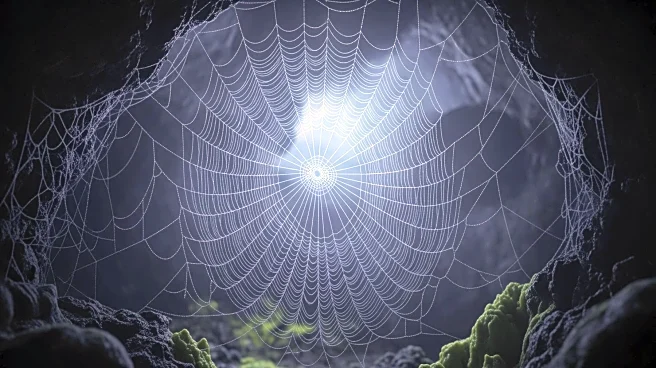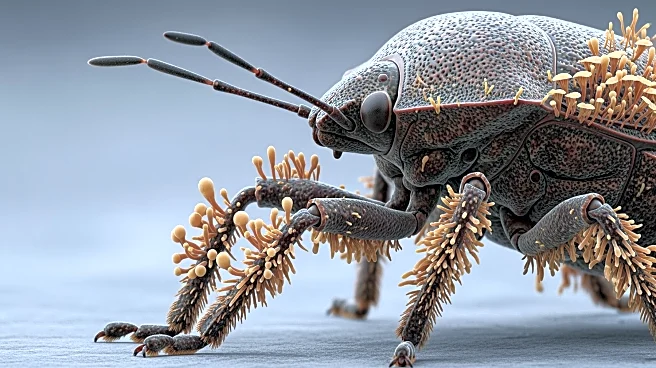What's Happening?
Researchers have discovered what may be the world's largest spider web, spanning over 100 square meters, in a sulfur cave located on the Albania-Greece border. This web is home to a colony of approximately
69,000 Tegenaria domestica and 42,000 Prinerigone vagans spiders. The discovery marks the first documented case of colonial web formation for these typically solitary species. The spiders thrive in the cave's unique environment, which lacks sunlight and contains high levels of toxic hydrogen sulfide gas. The arachnids' food chain is sustained by sulfur-oxidizing microbes, which are consumed by chironomid flies that the spiders catch in their web.
Why It's Important?
The discovery of this spider megacity provides new insights into the adaptability and survival strategies of arachnids in extreme environments. The genetic isolation of the cave-dwelling spiders from their surface counterparts suggests evolutionary adaptations to the cave's harsh conditions. This finding contributes to the understanding of ecological dynamics in subterranean habitats and the potential for species to develop unique survival mechanisms. The study also highlights the role of chemoautotrophic ecosystems in supporting life in environments previously thought to be inhospitable.














